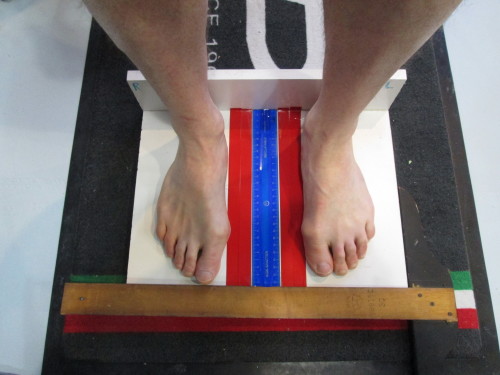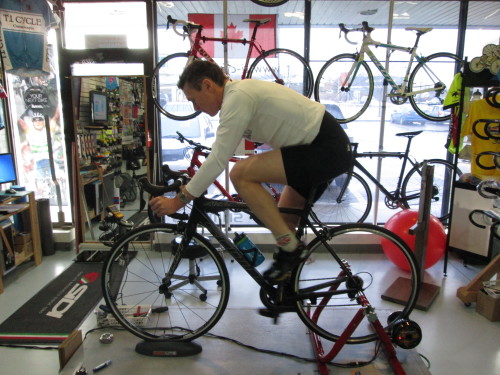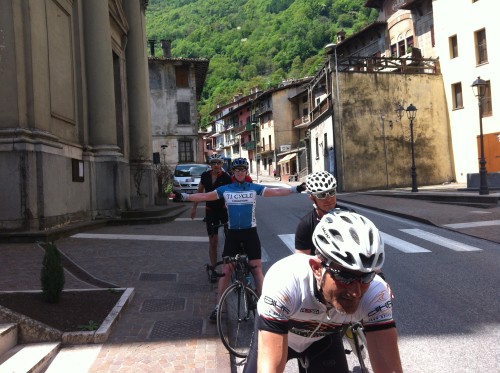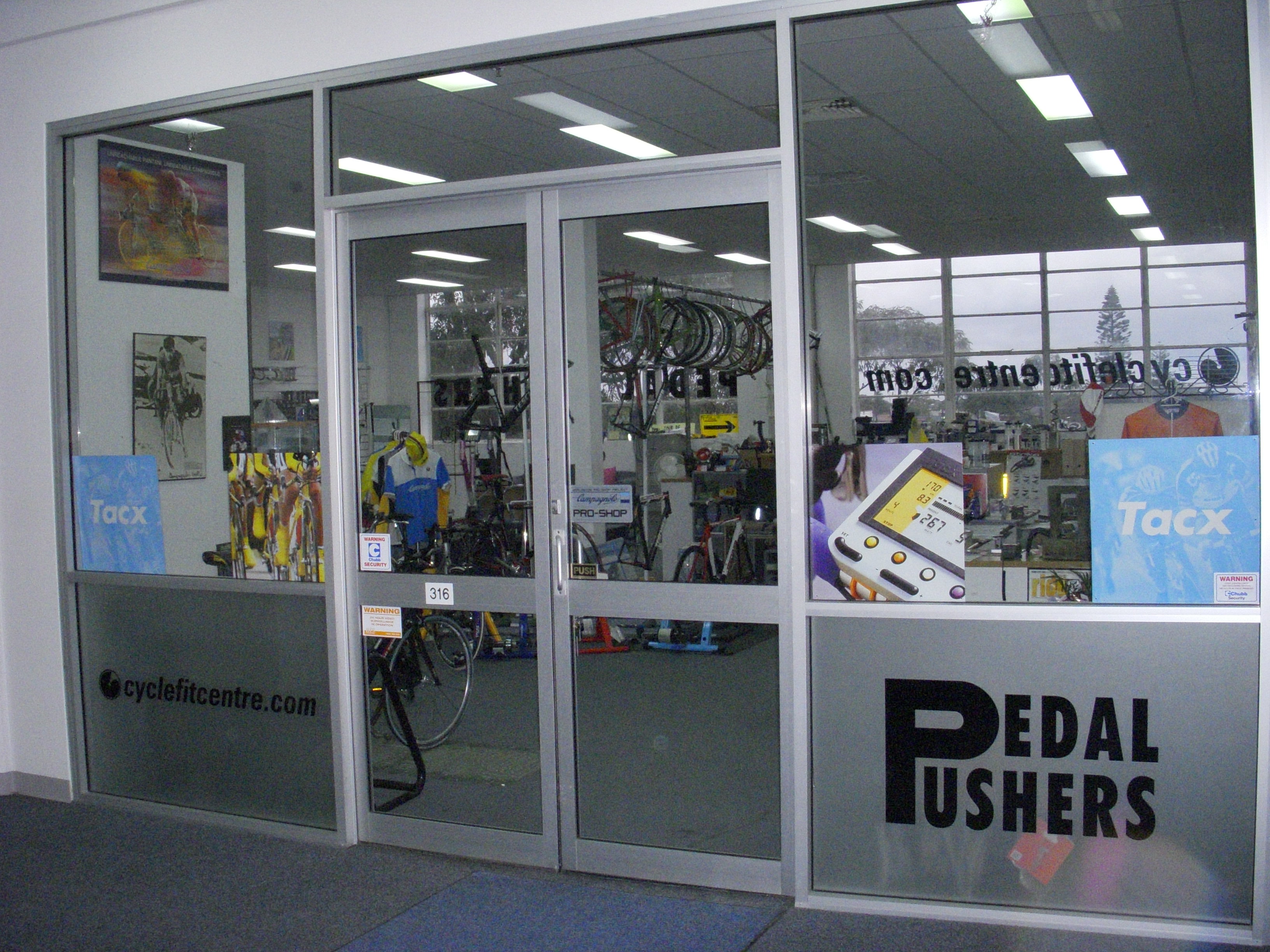By Mark Dwyre
RM arrived at TI Cycle in search of a new bike. He is an experienced competitive cyclist and former runner, with the future goals of completing grand fondo rides and competing successfully in Masters road races. RM mentioned had he been struggling for some time with his current set-up and out-dated equipment and felt that poor position and equipment in need of an upgrade were impeding his ability realise his potential. RM’s primary complaints were pain and tightness in his hip, neck and shoulders, a feeling of being unbalanced on his bike and general lack of fluency while pedaling. He lacked confidence in his equipment and existing bike position. A running injury had also left him with the possibility of a torn labrum in the right hip.
I put RM through a thorough functional evaluation followed by an on-bike evaluation of his current set-up. Despite his history of high-level athleticism (he is also a competitive marathoner and had been competing in cross-country and triathlon events since high-school) he was asymmetrically tight and did not perform well at all in the functional and balance testing. He confessed to, at best, engaging in strengthening / stretching / stability type exercises for one hour a week. Additionally though he has consulted a PT to address some of his problems, he was not completing the “homework” required of him by the PT.
The highlights of the functional evaluation were:
A pattern of right-side dominance which caused a right hip drop.
A right foot that is 11mm longer than the left foot (see below):

Right side of pelvis sitting 10 mm higher than the left side.
Right shoulder 10mm higher than his left.
A flexed (kyphotic ) thoracic spine.
Not surprisingly, the on-bike evaluation largely correlated with these imbalances. RM was not stable on his saddle, his glutes didn’t fire well and his flexed thoracic spine prevented him from reaching the bars comfortably. So the current bike position was exaggerating his functional shortcomings with too high a seat and too much seat set back. RM’s cleat position was less than ideal with not enough foot over the pedal for his foot length, pedaling technique and stated objectives.
RM is a high-level compensator, a particularly challenging breed of client who tend to be able to maintain consistent athletic prowess while being plagued with a slew of on-going physical complaints without an obvious “one-point” source. Clients like this are certain to provoke some head-scratching on my part as I work through a fitting! People are individual and each clients pattern of compensatory responses to their various issues is also individual. Fitting is not a box ticking exercise, each customer is a unique puzzle with a unique solution that needs to be found for a successful fitting and satisfied customer.
Solution (starting from the feet up):
RM was purchasing a new bike so it was straight forward to implement the changes necessary to allow RM better stability and comfort. This started with a more appropriately sized frame. New Sidi Wires shoes and G8 2600 arch support insoles, each with 30 mm height arch inserts, held both his feet securely despite the foot-length difference and was all that was needed to achieve optimal foot correction using our IP protocols. RM is one of the the relatively uncommon riders who needs no cleat or heel wedging, only properly fitting arch support insoles.
His pelvic misalignment was also addressed using the IP protocols we share as a group. This removed the 10mm height difference between each iliac crest. Other proprietary techniques were applied to address neurological deficits.
Despite his foot-length difference, RM required the same amount of foot over pedal on each side as the placement of the MTP joints is the same on both sides as measured from the heel. It is the toes only that are longer on the right foot. This is not common. Usually a difference in foot length of 11mm, just over two shoe sizes, will also yield a relative difference in MTP joint placement.
New Speedplay Zero pedals were fitted. They allowed a cleat position of BOFOPA (ball of the foot over pedal axle) +15 mm in addition to a wider pedal separation distance. An SMP Composit saddle was fitted and seat height was lowered. The impact of these various changes resulted in RM’s glutes firing effectively and had him sitting more squarely on the saddle. Despite this RM continued to drop his right hip under load despite having correct saddle height and set back. A 5mm shim under the right foot was installed under the right cleat which remedied this. That result suggests a functional difference in leg length, so the need and the height of shim stack will be revisited from time to time.
The last equipment change was as a shorter stem length allowed RM to reach the hoods and drops more comfortably, despite his kyphotic spine.

Lastly but most importantly, I strongly recommended to RM that he start completing the off-bike “homework” provided by his PT as well as the additions to this program that I had suggested. Only by following those instructions will he gain more symmetry and mobility and reduce or remove his left / right imbalances over time.
Result: RM recently completed a cycle tour in Italy without his “normal” discomforts and and is very happy with the result of our time together.




